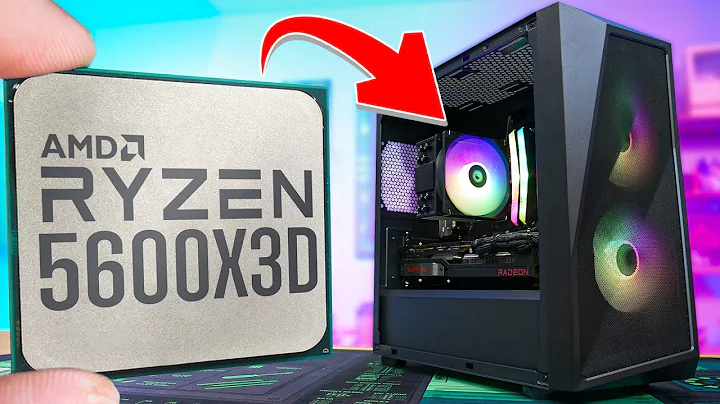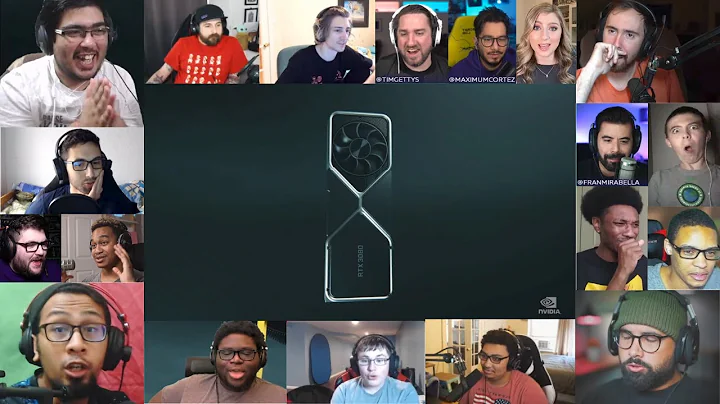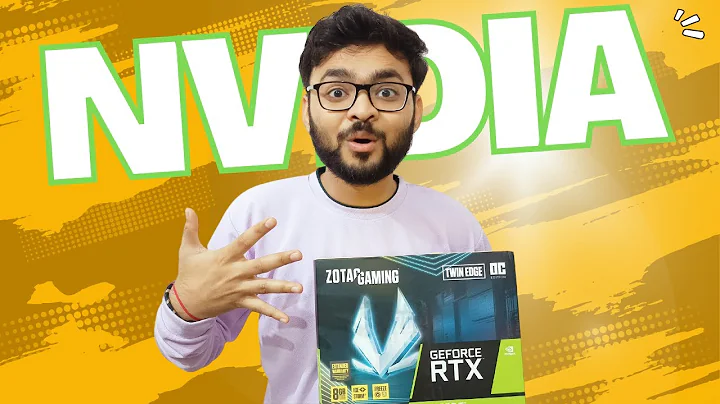Nvidia's Open Source Drivers: A Game-Changer for Linux Gamers
Table of Contents:
- Introduction
- Nvidia's Open Source GPU Drivers for Linux
- The Alpha Release of Open Source Drivers
- Limitations and Caveats of the Open Source Drivers
- Implications for Linux Gamers
- The Impact on Nvidia's Market Share
- Speculations on Nvidia's Motivations
- Potential Threats and Competitors
- The Significance of Open Source Contribution
- Conclusion
Nvidia's Open Source GPU Drivers for Linux
🔹 Introduction
Nvidia's recent announcement regarding their open-source GPU drivers for Linux has generated considerable interest and speculation within the tech community. The release of these drivers is seen as a significant move that could potentially impact the gaming experience for Linux users. In this article, we will delve into the details of Nvidia's open-source drivers, explore their implications for Linux gamers, and discuss the potential motivations behind Nvidia's decision.
🔹 Nvidia's Open Source GPU Drivers for Linux
The alpha release of Nvidia's open-source drivers marks a major development in the Linux gaming ecosystem. After nearly a decade since Linus Torvalds' explicit gesture towards Nvidia's proprietary drivers, the availability of open-source drivers seems like a step towards embracing the Linux community. These drivers are currently limited to Turing or RTX20 and later GPUs due to their reliance on the GPU system processor of these generations. While the kernel module of the drivers is open source, the user space modules and utilities remain closed source.
🔹 The Alpha Release of Open Source Drivers
The long-overdue arrival of the open-source drivers brings a glimmer of hope for Linux gamers. The alpha release of the drivers signifies a significant step towards stability and compatibility. Although the drivers are not entirely open source, this move by Nvidia is expected to improve usability for Linux users. While the open-source drivers may not fulfill the expectations of all enthusiasts, they offer a simplified and more accessible solution for the average user.
🔹 Limitations and Caveats of the Open Source Drivers
While the release of open-source drivers is an exciting development, it is essential to acknowledge the limitations and caveats associated with them. The restricted compatibility with specific GPU generations limits the accessibility of these drivers for a significant portion of Nvidia's user base. Furthermore, the closed-source nature of the user space modules and utilities raises concerns about the collaboration and contribution from the open-source community. Despite these drawbacks, the open-source drivers are expected to enhance stability and potentially unlock features that were previously blocked by Nvidia.
🔹 Implications for Linux Gamers
The availability of Nvidia's open-source drivers brings both advantages and disadvantages for Linux gamers. On one hand, the drivers offer a more streamlined and stable gaming experience, providing increased compatibility and performance for supported GPUs. This can potentially attract more users to adopt Linux as a gaming platform. However, the closed-source nature of certain components limits customization and optimization. Furthermore, the dominance of AMD in the Linux gaming market, coupled with the emergence of platforms like the Steam Deck, poses a challenge for Nvidia to maintain its market share among Linux gamers.
🔹 The Impact on Nvidia's Market Share
Nvidia's decision to release open-source drivers could have significant repercussions for its market share among Linux gamers. By allowing the open-source community to contribute and improve the drivers, Nvidia can leverage their expertise and address issues more efficiently. Failure to embrace the open-source movement could result in a decline in market share as competitors like AMD gain traction with their open-source offerings. Nvidia's open-source drivers serve as a strategic move to regain lost ground and establish a stronger foothold in the Linux gaming market.
🔹 Speculations on Nvidia's Motivations
The motivations behind Nvidia's decision to release open-source drivers have sparked various speculations and debates. Some theories suggest that Nvidia's move is a response to the threat posed by platforms like the Steam Deck, aiming to ensure their GPUs remain compatible and optimized for Linux gaming. Others speculate that Nvidia is attempting to stay relevant in the data center segment, where AMD's Arc and Radeon Pro GPUs are gaining momentum. Another theory revolves around a hypothetical internal takeover by Linux enthusiasts within Nvidia, pushing for an open-source approach. While these speculations provide interesting perspectives, only Nvidia can reveal the true motives behind their decision.
🔹 Potential Threats and Competitors
The release of open-source drivers not only presents an opportunity for Nvidia but also poses potential threats from competitors. The Steam Deck, with its focus on Linux gaming, has the potential to disrupt Nvidia's market share. Valve's efforts to optimize both the CPU and GPU of the Steam Deck could give AMD a significant advantage unless Nvidia opens up its drivers further. The growing popularity of Linux-based gaming platforms, combined with the demand for open-source solutions, necessitates Nvidia's proactive approach to remain competitive in the market.
🔹 The Significance of Open Source Contribution
The open-source nature of Nvidia's drivers holds immense significance for the Linux community. While the current release may not meet the expectations of all enthusiasts, it marks a step towards a more open and collaborative ecosystem. By allowing contributions from the open-source community, Nvidia acknowledges the value of collective efforts and expertise. This approach not only improves the stability and usability of their drivers but also fosters a sense of inclusivity and empowerment within the Linux gaming community.
🔹 Conclusion
In conclusion, Nvidia's release of open-source GPU drivers for Linux signifies a significant milestone in the company's relationship with the Linux gaming community. While there are limitations and caveats associated with the current state of the drivers, their availability opens up opportunities for increased stability, compatibility, and potentially enhanced features. The motivations behind Nvidia's decision to embrace open source remain a subject of speculation, but it is clear that the company recognizes the value of catering to the Linux gaming market. As the Linux gaming landscape continues to evolve, Nvidia's open-source drivers serve as a stepping stone towards a more inclusive and vibrant ecosystem.
Highlights:
- Nvidia announces open-source GPU drivers for Linux, sparking speculation and interest within the tech community.
- The alpha release of the open-source drivers offers increased stability and compatibility for Linux gamers.
- Limitations exist, with the drivers only working on specific GPU generations and certain components remaining closed source.
- Nvidia's decision influences their market share among Linux gamers, with competition from AMD and challenges brought by platforms like the Steam Deck.
- Speculation surrounds Nvidia's motivations, including responses to the Steam Deck and threats to their data center segment.
- Embracing open source enables collaboration and contribution from the Linux community and improves driver stability.
FAQ:
Q: Are Nvidia's open-source drivers compatible with all GPUs?
A: No, the open-source drivers are restricted to Turing or RTX20 and later GPUs due to their reliance on specific GPU system processors.
Q: Are all components of Nvidia's open-source drivers open source?
A: No, while the kernel module is open source, user space modules and utilities remain closed source.
Q: How will the open-source drivers impact Linux gamers?
A: The drivers offer a more streamlined and stable gaming experience but may limit customization and optimization opportunities. They also impact Nvidia's market share and competition with AMD.
Q: What are some potential threats to Nvidia in the Linux gaming market?
A: Competitors like AMD, with their open-source offerings, and platforms like the Steam Deck, which optimize both CPU and GPU for Linux gaming, pose challenges to Nvidia's market share.
Q: What is the significance of Nvidia's open-source contribution?
A: Nvidia's open-source drivers signify a willingness to collaborate with the Linux community, improving stability and fostering inclusivity within the Linux gaming ecosystem.
 WHY YOU SHOULD CHOOSE TOOLIFY
WHY YOU SHOULD CHOOSE TOOLIFY




































